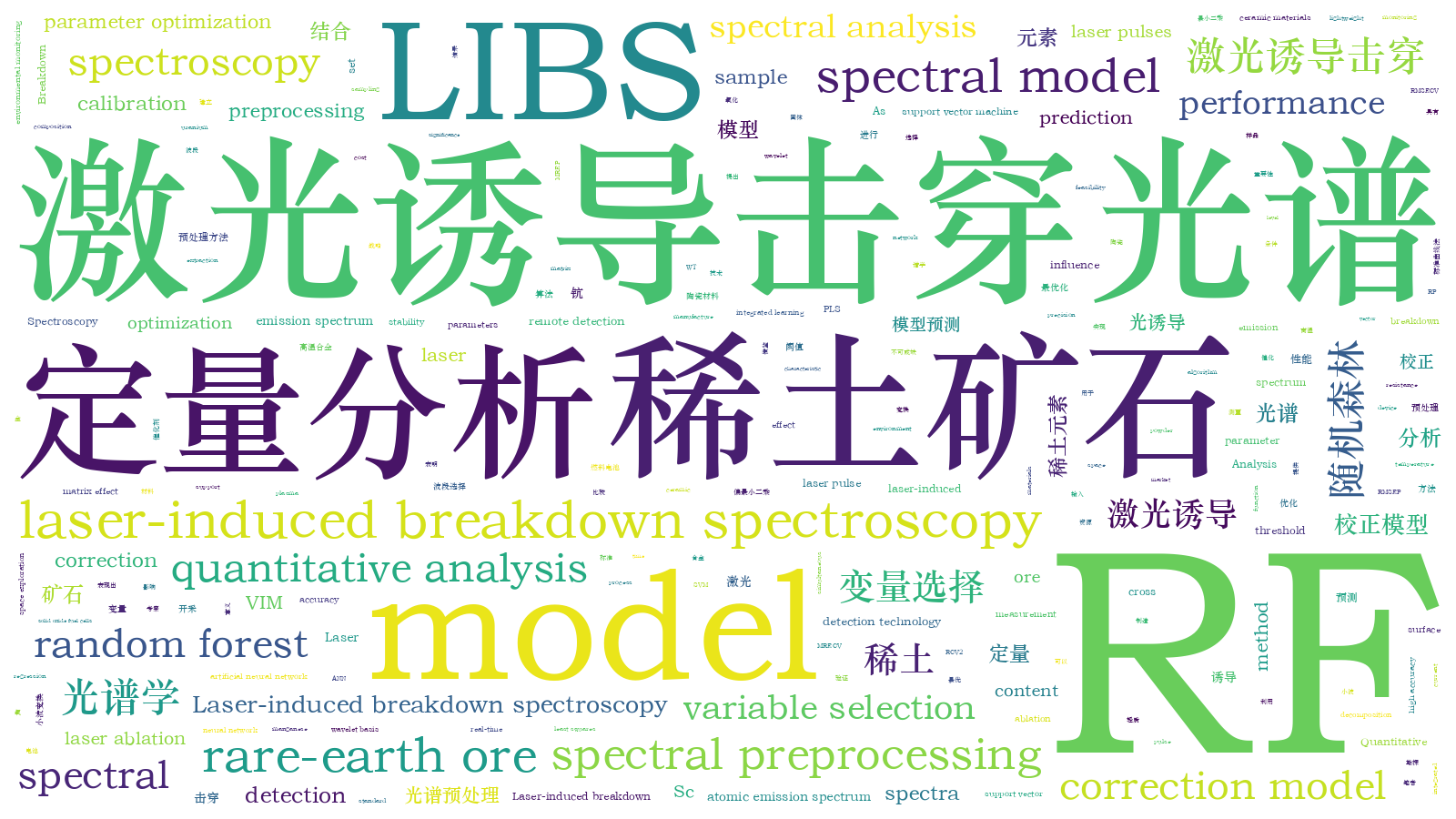激光诱导击穿光谱结合随机森林的稀土矿石中钪元素定量分析
Sc element is an indispensable strategic resource that is widely used in the manufacture of solid oxide fuel cells, ceramic materials, catalysts, and lightweight high-temperature alloys. Sc mainly exists in minerals, such as rare-earth ores, bauxites, uranium ores, and manganese iron ores. However, its scarcity (the Sc content in the crust accounting for approximately 0.0005%) and the high cost of extraction lead to the current shortage of Sc in the rare-earth market. Therefore, quantitatively analyzing the Sc content in rare-earth ores holds great significance for exploring and mining these ores. Laser-induced breakdown spectroscopy (LIBS) is an analytical detection technology based on the atomic emission spectrum of plasma generated by laser ablation of samples. The characteristic emission spectrum produced by the laser ablation of the sample surface determines the elemental composition and content of the samples. Compared to other technologies, LIBS offers numerous advantages such as no sample preparation, simultaneous multi-element analysis, on-site rapid detection, remote detection, real-time online detection, and microdamage detection. It is extensively used in various fields such as metallurgical analysis, geological exploration, environmental monitoring, and space exploration. However, the spectrum’s stability is affected by the sample’s matrix effect, the unevenness of the sample surface, and changes in the detection environment during the LIBS detection process. In recent years, multivariate correction methods, such as random forest (RF), partial least squares (PLS), artificial neural network (ANN), and support vector machine (SVM) successfully address and resolve these issues. These methods enhance the accuracy and precision of LIBS spectral analysis, yielding impressive results. RF is an integrated learning method that is based on a regression tree, stands out for its resistance to overfitting, high accuracy, and straightforward optimization of model parameters. It is in widespread use in LIBS spectral analysis. This study aims to explore the feasibility of combining LIBS with RF for the quantitative analysis of Sc in rare-earth ores.
In this study, a method for quantitative analysis of Sc in rare-earth ores based on laser-induced breakdown spectroscopy (LIBS) combined with a random forest (RF) algorithm had been proposed. Six rare-earth ore standard samples were prepared, and the reference values for the Sc content in rare-earth ore samples are shown in Table 1. Each powder sample was compressed into thin slices using a tablet press at 20 MPa for 5 min before the LIBS spectra were collected. Next, an LIBS device was set up to collect the spectra. To enhance the stability of the LIBS spectra of rare-earth ore samples, 16 sampling points were randomly chosen for LIBS spectra collection for each compressed piece. The LIBS spectra were obtained by accumulating five laser pulses and averaging them to minimize the effect of laser pulse fluctuations. A total of 96 spectral data points were collected from the six rare-earth ore samples (16 spectra for each sample). The influence of different spectral preprocessing methods on the performance of the RF model was then investigated, and variable importance measurement (VIM) was applied for feature screening and parameter optimization for the RF calibration model. To further validate the prediction performance of the RF model, it was compared with other models. Finally, a VIM-RF calibration model was established based on the optimized spectral preprocessing and VIM threshold conditions.
First, the influence of different spectral preprocessing methods on the performance of the RF model is investigated. As Table 2 demonstrates, the RF correction model processed by the WT (where the wavelet basis function is Coif5, and the decomposition level is 1) realizes better cross-validation and internal validation results within the correction set. Compared to the original spectral model, the cross-validation results of the WT-RF correction model show an increase in
This study establishes a method for detecting Sc in rare-earth ores based on LIBS combined with VIM-RF. First, the influence of different spectral preprocessing methods on the performance of the RF model is investigated. Then, variable importance measurement (VIM) is applied for feature screening and parameter optimization for the RF calibration model. To further verify the prediction performance of the RF model, it is compared with other models. Finally, a VIM-RF calibration model is established based on the optimized spectral preprocessing (WT) and VIM threshold (0.016) conditions. The results show that the VIM-RF model exhibits excellent prediction performance (
周嘉俊, 李茂刚, 张天龙, 汤宏胜, 李华. 激光诱导击穿光谱结合随机森林的稀土矿石中钪元素定量分析[J]. 中国激光, 2024, 51(2): 0211001. Jiajun Zhou, Maogang Li, Tianlong Zhang, Hongsheng Tang, Hua Li. Quantitative Analysis of Sc in Rare‐Earth Ores via Laser‐Induced Breakdown Spectroscopy Combined with Random Forest[J]. Chinese Journal of Lasers, 2024, 51(2): 0211001.







